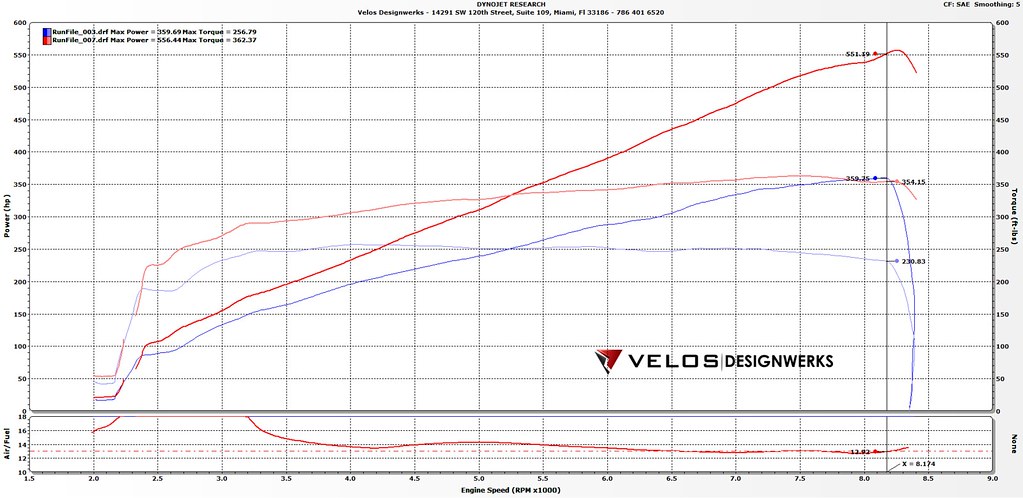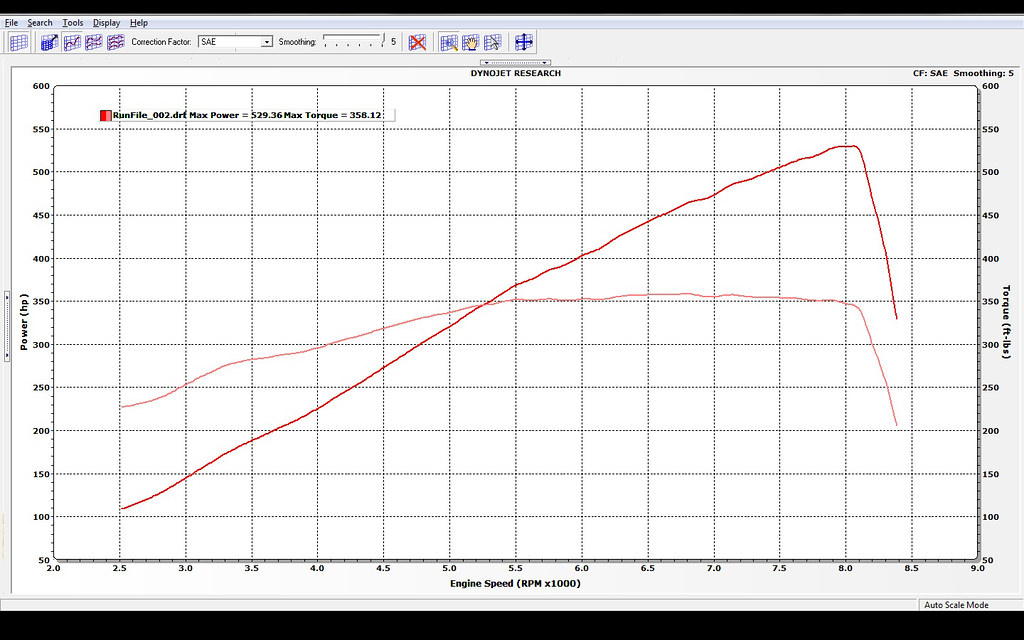Jean, I know you're well versed on semantics and forum posts, so I'll address a few things that I noticed.
Quote:
Originally Posted by Jean@VelosDesignwerks

Boost: it is no secret that the charger makes boost etc... which allows us to make more power from an S65.
Once the air is compressed it has to makes it way into the intake manifold and then to the engine. The ESS system has a very short amount of travel between the charger and engine, the fastest path between two points is a straight line.
While the AA system requires the compressed air to travel quite a bit before entering the intake manifold, it much travel around a few 90 degree bends and actually go full circle before reaching the intake manifold, if you study physics you will see why this is not ideal.
A little background on superchargers: they take power to make power (we can go deeper into this by request but it has been discussed many times over).
Considering above, the ESS system does not have to work as hard to make the required boost to achieve the required power output; however, the AA system not only has to travel much longer distances but it also have to enter the intercooler half way between it's travel. During testing the AA system has to actually make a few extra pounds of boost to compensate for the few pounds of boost that are lost during the travel and from the intercooler. Which in turn forces the engine to work harder because it has to create more boost and is actually forced to work harder to compensate for a less efficient system.
Charge cooling: I want to be the first to recognize the improvements of aftercooling as an effective method of charge cooling, i have been a long time believer of intercooling and refused to admit aftercooling could be efficient.
The method of charge cooling should dictated by the platform and the system to find the most efficient method. In our case, space is an issue which is probably a big reason improvements in aftercooling have been addressed over the past few years. For example: the N54 which was the first recent turbo model by BMW was intercooled; however, the S63TU found the M5 is aftercooled and makes more power. Which makes my point that the method should be dictated by the platform.
Going back to the Boost section above, running an aftercooler allows the compressed air to reach the engine with less restriction and at the same time placing less load on the engine to make power.
|
AA's kit does have more area to cover before the charge reaches the throttle bodies. You're right on that. However, would you not agree that charge cooling through an air-water core is more restrictive than a larger sized air-air intercooler? I'm sure you'll also agree that for any sort of cooling to be effective, there must be some sort of restriction.
As for pressure drop, have you personally measured pre and post cooler pressure differences on both kits on a day with similar conditions?
You can't compare the N54 to the S63TU, obviously the twin turbo v8 makes more power than the straight 6 3.0L. The N55 was released air-air, along with the N20. If you've worked on the S63TU you'll notice that with the location of the turbos it's not logical to run an air-air setup.
Quote:
Originally Posted by Jean@VelosDesignwerks

Tuning:
The first is the throttle response. The ESS system feels like a wire, the response is instand and smooth but powerful, with traction off and street tires on a 20" wheel the car will get away from you in third gear if you allow it too.
The AA system is smooth but it has a weird hesitation around 3K which could be attributed to the design of the system since the compressed air has to travel quite a bit (compared to the ESS System) or it could be software. This hesitation can be exaggerated based driving style or not be noticed at all based on driving style.
Second is the power delivery at redline. The ESS system revs cleanly to redline. If anyone has driven a stock E92 M3, you know that as you approach redline the throttle starts to close and if you hit redline it's a soft redline, you dont bang on it like the E46 M3. It seems AA has not figured this out and it gives the driver a weird drop off as you close in on redline, where the ESS system feels like it just wants to keep going. The only thing possible is to shift early once you've become accustomed to the system however, you are then missing out on a few hundred RPM of the power band given AA lowers the redline and you still need to shift early. This dip/drop off is seen on all dyno charts.
|
We both know that throttle response with a drive by wire system can be tuned to different sensitivities. Some people prefer their throttle control to be exponential, whereas some prefer a linear style delivery. Doesn't mean one is better than any other.
Banging the rev limiter like the e46 M3 is how you bend rods. You put the most stress on a motor when you lift at high rpm under load. Again, different tuners will do different things, it's preference.
Quote:
Originally Posted by Jean@VelosDesignwerks

Meth: Meth has been one of the quickest ways to make more horsepower and provide an edge to anyone looking for one. However, i am not sure if requiring your system to use meth is the best method of making power. The ESS systems make more power without meth while the comparable level 2 AA system makes less power with meth. It is an added piece of the system which add to the systems install difficulty and could be a turn off for the DIY member. It is also something else that requires maintenance. Some other aftermarket systems come with some sort of light or gauge when your tank is empty, hopefully AA can add this to their system as it should have already been included.
|
Reving a centrifugal blower higher will yield higher HP numbers. The last AA meth kit we installed had a green LED.
Quote:
Originally Posted by Jean@VelosDesignwerks

Dyno Charts used for reference: Both charts were done at the same Dyno Jet. How do i know? Like Chris Berman would say on Sports Center "because we were there". Both posted in SAE and Smoothing 5.
ESS VT-625 System with full exhaust and no meth:

AA Level 2 System with full exhaust and meth:

|
If you look at both dynos, the AA kit makes more power up until about 7250rpm. Would you attribute that to restriction, blower design, tuning, or the somewhat lean afr on the ESS car?
The ESS car peaks higher, but it also revs higher.